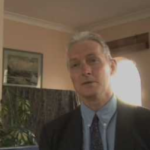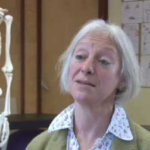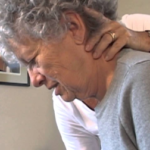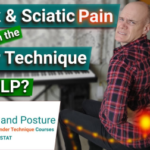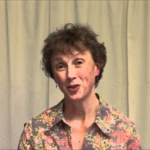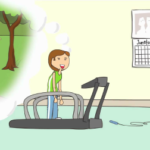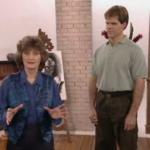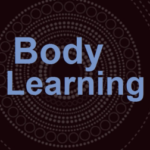Benefits and Research
The Alexander Technique attracts individuals wanting to improve mobility, ease postural discomfort, reduce chronic pain, and manage stress, while others seek lessons to advance their skills in the performing arts and athletic endeavours. Browse the menu lists below to learn more about how Alexander Technique can benefit you.
Use of resources
Please note that the content within the Research & Resources and Videos sections is provided only for general information purposes.
Use of Resources
Please note that the content within the Research & Resources is provided only for general information purposes. Many of the resources, such as books, are not free. Links to other websites or platforms are provided for viewers’ convenience, but ATC does not control or monitor them and accordingly cannot endorse their information or guarantee its accuracy and relevance. The use of content or links to third-party websites is at the viewers’ own risk. Viewers should contact an ATC-certified Alexander Technique teacher with any questions about the application of Alexander Technique to their specific issues.
Pain Relief
- Benefits
- Resources
- Videos
- Testimonials
Many individuals are attracted to Alexander Technique because they find relief from chronic pain or repetitive stress injuries. Back pain, in particular, is a very common problem that can interfere with one’s well-being, limit physical activities, and potentially lead to an inability to carry out one’s job.
Most individuals instinctively want to protect the part of the body that experiences pain, but do not realize that their protective gestures can cause greater muscular tension and imbalance, unintentionally creating more unnecessary pain in the process.
A 2008 study published in the British Medical Journal (BMJ) hypothesized that Alexander Technique helps to “reduce back pain by limiting muscle spasm, strengthening postural muscles, improving coordination and flexibility, and decompressing the spine.” It concluded that one-on-one Alexander Technique lessons had long term benefits for individuals with chronic back pain and that Alexander Technique had longer-lasting effects than massage. (https://www.bmj.com/content/337/bmj.a884)
Having better posture as a result of Alexander Technique lessons can reduce pain that relates to physical imbalances or muscular tension.
Articles & Books - General Pain
Alexander Technique
Articles - Back Pain
What is the Perceived Impact of Alexander Technique Lessons on Health Status, Costs and Pain Management . . . .for those with Chronic Back Pain
Books - Back Pain
Free Your Back: Ease Pain and Regain Natural Poise with Gentle Exercises
Articles - Neck Pain
Reported Outcomes of the Alexander Technique Lessons or Acupuncture Sessions for Persons With Chronic Neck Pain Article
Self-efficacy and Embodiment associated with Alexander Technique Lessons or with Acupuncture Sessions: A longitudinal qualitative sub-study within the ATLAS trial
Self-efficacy and Self-care-related outcomes following Alexander Technique Lessons for People with Chronic Neck Pain in the ATLAS randomised, controlled trial
PODCAST
97% of people with back pain could benefit by learning the Alexander Technique – it is only a very small minority of back pain sufferers that require medical intervention such as surgery.
– Dr. Jack Stern, spinal neurosurgeon
After a number of years of doing mainstream modalities, I had been searching for something alternative to help relieve chronic neck and shoulder pain as a result of 27 years of being a dentist. Somehow one search led to another online and I found Alexander Technique. I started lessons in July 2018. I found a teacher with whom I feel very comfortable. I am able to relate to her and most of all trust her and my body definitely feels different in a positive way.
After a session with my teacher, I feel a sense of lightness and a calming effect on my nervous system, going from a high alert sympathetic to a parasympathetic. I particularly enjoy the benefits of constructive rest on the floor, which I do every morning religiously. Lessons have helped me to slow down, rather than doing things in a rushed manner. I am aware of performing actions with intention rather than just out of habit and I am much more aware of what my body is doing. I really find AT a combination of mindfulness and meditation. In particular, constructive rest helps to ground and centre me. I am able to “let go”.
I must say that I really enjoy my weekly lessons and very much look forward to them. My teacher has a calming effect on me. It is very important to find a teacher with whom you resonate but once you do, your life will change.
– Sheila Baker, Dentist
I am a writer by trade and as such dependent upon being able to sit upright for hours pounding computer keys while performing mental acrobatics in a state of intense concentration. I’m also a perfectionist and do everything the hard way, with far more effort than it really requires. So far, I’ve had two brush-ups with intense pain – a very dramatic episode of sciatica in 1997, when I lived and worked in almost constant pain for nine months, and a much milder, but still very scary and unpleasant, case of carpal tunnel syndrome in 2002, which lasted for about five months . . . . I was daily faced with the possibility of losing my livelihood – causing me to deploy every resource at my disposal to find a solution.
The Alexander Technique is all about HOW – how you do what you do, in painstaking physical detail. And how to allow a new, different way of doing it . . . . I’m currently looking into what happens in my throat, neck and jaw when I speak in public, and how I physically shrink into myself when using my thinking function to solve problems. At its best, the Technique is for me a daily gentle reminder of what is possible. The primary control affects every system in the body. It affects the whole spine and all the joints. It affects the breathing. The breathing in turn affects the emotions. When I “come up into my full uprightness,” I access the natural support of my whole body and I’m no longer so hemmed in by all my tight and fearful places.
– Ana Simeon

